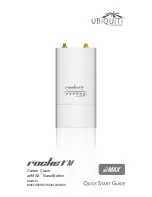
1 Introduction
ARGUS 152
7
1 Introduction
The VDSL+ADSL universal test set
Compact, lightweight and robust: The ARGUS 152 multifunction tester checks interfaces
and services quickly and reliably - and at a very reasonable price. VDSL2 (incl. Vectoring),
ADSL, Ethernet, ISDN (BRI S/T/U) and POTS, as well as the physical condition of the local
loop, can be easily tested without having to swap modules.
Gigabit Ethernet interface and tests
A new high-quality ADSL/VDSL chipset with improved efficiency ensures that the ARGUS
152 delivers high-performance testing and rapid analysis. In addition to resistance,
capacitance and voltage measurement, the ARGUS 152 features, when using its Gigabit
Ethernet interface, an optional HTTP download, which enables speeds with multiple
100 Mbit/s on the protocol level. The ARGUS 152's Ethernet cabling tests make it possible
to detect shorts, opens or mismatches, but also the delay or polarity of the wire pairs,
among other things.
Physical analysis of the local loop
On request, the universal tester can also be extended on an individual basis, thus offering
the user a high degree of flexibility. For instance, additional copper tests (Cu tests) can be
used to assess line quality, even without synchronization with the DSLAM. If necessary,
these tests can also be considerably extended in the field by simply connecting the
compact ARGUS Copper Box via USB, thus enabling all important electrical parameters
such as voltage, current, isolation resistance, LCL and NEXT (at 1 MHz), and many more,
to be automatically and quickly determined via tip, ring and ground. The optional Active
Probe II can even be used to carry out high-impedance measurements on an existing DSL
connection, without creating interference on it.
To quickly identify any asymmetries between the wires, if required, a symmetry test
compares the balance over the whole DSL frequency spectrum (up to 30 MHz) between
the tip wire and the ring wire with reference to ground. In the event of damage, the
integrated TDR (Time Domain Reflectometer) function can be used to measure line lengths
and trace sources of faults, such as bridged taps. Moreover, if required, an Advanced TDR
function (Adv. TDR) can be integrated, with which line lengths and sources of faults can be
detected even more accurately. If lines without a DSL receiver (e.g. in the case of a
rewiring) need to be tested for their DSL suitability, the ARGUS 152 can optionally check
this without any problem, even if there is no DSLAM. Regardless of line condition and
length, the user can use two devices and an activated Line Qualification (LQ) function to
determine data rates, even when systems consisting of a modem (xTU-R) and DSLAM
(xTU-C) fail.








































